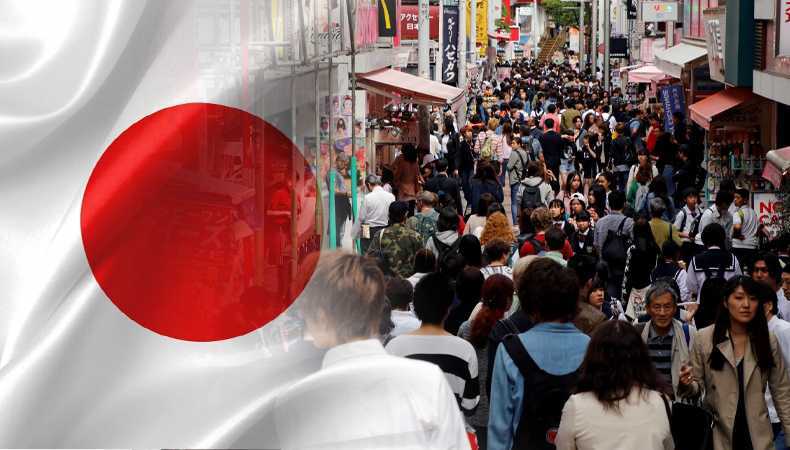Japan’s Demographic Shift: Decline in Japanese Nationals, Rise of Foreign Residents

As the number of Japanese citizens continues to fall at an unprecedented rate while the population of foreign residents rises, Japan is going through a historic demographic transition. The Ministry of Internal Affairs and Communications issued government data on January 1, 2023, highlighting the severity of the country’s ageing population and the expanding contribution of immigrants to balancing the demographic decline. The main conclusions of the data, the causes of Japan’s population reduction, and the government’s initiatives to solve this urgent issue are all covered in this article.
The number of Japanese citizens has fallen for the 14th year in a row, dropping by about 800,000 individuals to a total of 122.42 million. All 47 of the nation’s prefectures are now affected by this worrying trend, illustrating how pervasive the reduction is. This ongoing decline has been caused by several variables, including an ageing population and a chronically low birth rate.
Contrary to the diminishing number of Japanese citizens, a significant milestone has been attained in the number of foreign residents in Japan. A record 2.99 million foreign nationals called the nation home as of January 1, 2023, an astounding 10.7% increase from the year before. Since the Ministry started keeping track of data on foreign residents ten years ago, this is the most significant year-over-year gain. The pattern emphasises how crucial overseas immigrants are in boosting the labour force and filling the voids left by the ageing Japanese population.
ALSO READ : Typhoon Doksuri: Taiwan Cancels Han Kuang Military Exercises
The demographic information confirms foreigners’ crucial role in assisting the Japanese labour force. Due to the country’s ageing population and diminishing labour pool, more businesses and industries are turning to foreign employees to fill open positions. Foreign nationals are filling open positions in various sectors, helping the Japanese economy expand.
To accomplish the government’s economic growth projections by 2040, experts from Tokyo-based public think tanks have underlined that Japan has to boost its foreign workforce dramatically. The country’s economic potential is still significant, but much depends on how well we deal with demographic issues. With Tokyo serving as the hub of Japan’s economic activity, the city has the highest percentage of foreign inhabitants (581,112 people, or 4.2% of the capital’s population).
The Japanese government has taken action to solve the demographic catastrophe because it knows the problem. Promoting labour market changes to increase the employment of women, seniors, and other underrepresented groups in the workforce is one of the suggested remedies. Hirokazu Matsuno, the chief cabinet secretary, has also emphasised the significance of assisting working parents by funding daycare programs and other efforts. The government of Prime Minister Fumio Kishida intends to set aside a sizeable sum of 3.5 trillion yen ($25 billion) annually to carry out these initiatives and combat the dropping birthrate.
The seriousness of Japan’s demographic problems is illustrated by the most recent government data, which show that the native population is still declining while the number of immigrant inhabitants is significantly increasing. The population reduction in Japan, which is primarily brought on by a low birth rate and an ageing culture, poses a danger to the stability of the economy of the nation. But there is some hope that the increase in foreigners will help to address the labour deficit and stimulate economic growth. The Japanese government’s determination to fund childcare and labour market changes is a positive move. Future success for Japan in maintaining a strong and dynamic society will depend on its ability to embrace diversity and make the most of the talents and contributions of foreign inhabitants.
